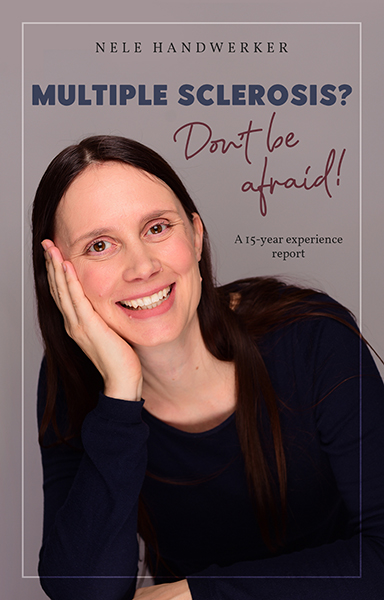This time I would like to introduce you to the different types of MS. But be aware, leading MS experts worldwide are increasingly breaking away from these terminologies, as in the end it is one and the same disease, although with different manifestations. Settling on one of the terminologies listed here can lead to difficulties in treatment options, as most countries have guidelines on which immunotherapy to use for which course. Therefore, although the classifications provide direction, they may be used less and less in the future.
Classically, there are five forms or precursors of multiple sclerosis (MS): RIS and CIS count to the prodromal stage. RRMS, SPMS and PPMS are variations of multiple sclerosis. As the criteria for a definitive diagnosis of MS have changed and been refined over the past several decades, it is now possible to treat individuals who previously fell into one of the preliminary stages. This helps to improve the long-term prognosis. Currently, the 2017 McDonald criteria are in place, but certainly there will be further adjustments in the near future.
Klicken Sie auf den unteren Button, um den Podcast zu laden.
Table of Contents
Radiologically Isolated Syndrome (RIS)
The diagnosis RIS occasionally occurs as an incidental finding when an MRI has been ordered for another reason. In this case, the MRI shows lesions at sites typical of MS, but which (so far) have not led to any noticeable relapses or impairments. Depending on their location and number, it is more or less likely that MS will develop from them in the further course of the disease.
Findings that are associated with a higher risk to develop multiple sclerosis in the next ten years are:
- younger age at RIS diagnosis
- oligoclonal bands in the cerebrospinal fluid (CSF)
- spinal cord lesions or infratentorial lesions
It might be even make sense to start with a disease-modifying drug, if there is a combination of bad prognostic factors.
Clinically Isolated Syndrome (CIS)
One receives the diagnosis of CIS when there is a neurological dysfunction caused by damage to the central nervous system (CNS) that lasts at least 24 hours and corresponding MRI lesions, but no dissemination in time and space. MS later develops in 30 to 70 percent of CIS patients. Depending on how high the risk of MS is assessed, neurologists recommend immunotherapy already at this preliminary stage. This can help to postpone a second demyelinating event and definite diagnosis for many years.
In any case, a close-meshed examination makes sense in order to be able to react quickly in case of further activity.
Relapsing-Remitting Multiple Sclerosis (RRMS)
RRMS is diagnosed in 80 to 90 percent of patients at the beginning. This involves acute relapses that develop within a few days, cause symptoms and persist for at least 24 hours. Few fade away quickly, mostly the symptoms stay for several weeks or months and fade away over time. When using corticosteroids this might be much quicker, but there is no proven advantage of corticosteroids in the long-term compared to just wait and watch.
The Neurological Reserve
The body repairs the damage caused to the central nervous system (CNS) by restructuring and using the neurological reserve. This usually works so well that symptoms often completely resolve initially. However, the neurological reserve is limited and is further depleted with each new lesion in the brain. Incidentally, only about ten percent of all lesions are initially noticeable as symptoms; the other 90 percent damage the brain without being noticed on the outside.
Be aware of hidden activity
So, it can seem as if the disease is sleeping, even though it continues to be active. Over time, the body becomes less able to compensate for damage. The nerve damage successively becomes chronic. More and more limitations remain. Those who start as early as possible with a disease-modifying therapy (DMT) and a healthy lifestyle can positively influence their prognosis. Fortunately, there is now a wide range of drugs from mild to (highly) active course.
Secondary Progressive Multiple Sclerosis (SPMS)
When the neurological reserve is used up, RRMS is followed by SPMS. The inflammatory activity decreases. Relapses no longer occur, or occur only rarely. Instead, the effects of neurodegeneration, the death of nerve cells, become more and more obvious. The central nervous system can no longer compensate for the increasing damage.
Without preventive treatment, meaning disease-modifying therapy (DMT) in combination with a healthy lifestyle at its best, 50 to 60 percent of those affected switch to SPMS after 15 to 20 years. Walking, in particular, becomes increasingly difficult. Cognitive abilities decrease and chronic fatigue usually intensifies. By the way most people who go into early retirement due to MS, have to do so as of cognitive issues. So far (as of August 2023), only a few drugs are available for the secondary progressive course. However, intensive research is being done.
Primary Progressive Multiple Sclerosis (PPMS)
Ten to 15 percent of those affected receive the diagnosis of PPMS at the beginning. This means that the neurological symptoms and associated disabilities increase steadily from the onset. Often there is little or no relapse activity. The changes in the brain can now be visualized in special MRI examinations, but these are not yet part of standard care.
So far, only drugs with CD20 antibodies have been shown to have a limited therapeutic effect. Significantly more research is and must be done here. The next interesting drug class might be the BTK-inhibitors who are interacting with microglia in the central nervous systems. First phase III clinical trials might be finalized in 2024. Let’s see if the results are as promising as researchers hope for.
Summary
Currently, the best chances in fighting MS are the disease modifying drugs also known as immunotherapy, combined with a healthy lifestyle. Patients diagnosed with RRMS or RSPMS (the name given to the transition to SPMS), as well as certain cases of CIS, have a wide range of immunotherapies to choose from. For the progressive courses we need higher effective therapies, but there is for sure lots of efforts going in that direction. So I am positive that we will soon see results from that. Meanwhile it is absolutly key to stay as active as possible to keep the symptoms small or fight them back and sports as well as cognitive training or even both trainings combined show very promising results.
I will talk more on that with my interview guests in upcoming episodes.
Stay as healthy as possible, well informed and try to make the most of your life,
Nele
Get more information and positive thoughts in my free newsletter.
If you like the podcast, subscribe now to never miss another episode. By the way, you can find an overview of all previously published episodes here.
I am always happy to receive feedback, suggestions and questions. Also feel free to send me a picture of where and when you listen to my podcast or read the posts to nele@ms-perspektive.com or use the contact form. That makes it more of an interactive exchange.

And at many more places.
* This text contains affiliate links. This means that I get a small compensation if you buy the product recommended by me through the link. For you nothing changes in the price of the product. And it helps me to pay for the blog and to write new posts.










